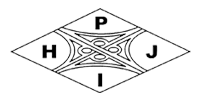ROAD RECONSTRUCTION WORK ZONE MANAGEMENT TOWARD A GREEN CONSTRUCTION CONCEPT
DOI:
https://doi.org/10.26593/jh.v1i1.1430.%25pAbstrak
Abstract
During road reconstruction period, a negative impact was imposed on road users and the surrounding environment. These impacts are the result of the work zone which is used as working space and road reconstruction. This work zone is potential to influence the drivers' stress and to decrease road traffic performance such as travel delays, congestions and road accidents. Guidelines for green (environmentally friendly) infrastructure defined in New Road Construction Concept (NR2C) in European infrastructure vision 2040 concept, can be used to mitigate this negative impact. Twenty projects of Balai V National Roads Improvement in East Java, and Balai VIII in Bali for fiscal year 2013 is used as a case study. Descriptive method used for the discussion of case studies. Management traffic safety in work zones assessed the suitability of the setting up of signs, markings and guardrail. Shift arrangements work during the day (peak hours) or night (off peak hour), is used as an indicator of the negative impact of road users and the environment. The analysis showed that the work zone management in the implementation of national road reconstruction projects toward green (environmentally friendly) construction concept. It is shown from the implementation of safety attributes average 68%, and the implementation of the reconstruction in the off peak hours by 55% of the projects.
Keywords: road reconstruction, work zone, negative impact, green construction
Abstrak
Pada saat pelaksanaan rekonstruksi jalan, dampak negatif akan terjadi pada pengguna jalan dan lingkungan sekitarnya. Dampak ini akibat zona pekerjaan yang digunakan untuk pekerjaan rekonstruksi. Zona pekerjaan ini berpotensi membuat pengemudi strees dan menurunnya kinerja lalulintas seperti tundaan perjalanan, kemacetan dan kecelakaan lalulintas. Pedoman untuk infrastruktur hijau (ramah lingkungan) menetapkan konsep konstruksi jalan baru (NR2C) dalam Visi Infrastruktur Eropa 2040. Konsep ini dapat memitigasi dampak negatif ini. Dua puluh proyek pada Balai V Jalan Nasional di Jawa Timur dan Bali VIII di Bali pada tahun fiscal 2013 digunakan untuk kasus studi. Metode deskriptif digunakan untuk dalam diskusi kasus studi. Manajemen keselamatan lalulintas di lokasi kerja dinilai terhadap keberlanjutan penempatan rambu, marka dan pagar pelindung. Pengaturan perubahan kerja pada siang hari (jam sibuk) atau malam hari (jam tidak sibuk) digunakan untuk indikator dampak negative pada pengguna jalan dan lingkungan. Dari analisis menunjukan manajemen zona kerja pada implementasi proyek-proyek rekonstruksi jalan nasional menuju konsep konstruksi hijau (ramah lingkungan). Terlihat dalam implementasi atribut keselamatan rata-rata 68% dan implementasi pada jam tidak sibuk hanya 55%.
Kata-kata kunci: konstruksi jalan, zona kerja, dampak negatif, konstruksi hijau.








